Notes For All Chapters Biology Class 11 CBSE
The angiosperms or flowering plants show a large diversity in external structure called as morphology (Gk. Morphe—form; logos—study). However, they all are characterised by the presence of roots, stems, leaves, flowers and fruits.
1. Flowering Plants
The plant body consists of a main axis, which may be branched or unbranched bearing lateral appendages.
The main axis is divided into two parts
(i) Root system The underground root system develops from the radicle embryo and helps in fixation of the plant as well as absorption of water and minerals.
(ii) Shoot system The aerial shoot system develops from the plumule embryo.
It contains root, stem, leaves as vegetative parts and flowers, fruits and seeds as reproductive parts. The Vegetative parts are involved in various vegetative functions like structural organisation, fixation, absorption, nourishment, growth and maintenance of various components and ” reproducting parts are for sexual reproduction and germination of new plants.
The Root
In plants, root is the non-green (due to absence of chlorophyll), cylindrical and descending part that normally grows downwards into the soil. It does not bear leaves, buds and not distinguished into nodes and inter nodes.
Regions of the Root
A typical root contains following five regions. However, there is no clear line of distinction between these regions.
i. Root Cap (Calyptra)
The root is covered at the apex by a thimble or cap-like structure called the root cap. It protects the root meristem from friction of the soil particles and also protect tender apex which allow the passage of root through cells, e.g., Lemna, Eichhornia.
ii. Growing Point (Meristematic) Zone
It is a small (about 1 mm in length) thin-walled region having dense protoplasm. It lies partly within and partly beyond the root cap. Its cell divide regularly and repeatedly for elongation. It is responsible for the growth of the root.
iii. Zone of Elongation
It is situated behind the meristematic region (growing point). The cells elongate speedily and increases the length of the root. The cells of this region can absorb water and minerals from the soil.
iv. Root Hair Zone
It is the region where primary tissues differentiate into the root. The vascular tissues like xylem and phloem are formed.
Root hair zone is the most important part of the root for absorption of water (most of the water) from the soil. The root hairs increase the exposed surface of the root for absorption.
v. Zone of Maturation
This zone contains mature cells. It forms the permanent zone of the root and also gives out lateral roots from the interior part of this region, e.g., In dicots and gymnosperms.
• Roots of parasitic plants lack root caps.
• In aquatic plants, root hairs are usually absent.
Types of Root System
The root system can be of two types on the basis of place of origin
i. Tap Root System
The tap root develops from the radicle of embryo of a seed. In most of the plants, primary root persists and becomes stronger to form tap root. The first root forms by the elongation of radicle and is called primary root. It continuously grows and produces lateral roots called secondary roots.
The further branches of the secondary roots are called tertiary roots and so on. These types of roots are present in dicots, e.g., Pea, gram, groundnut, etc.
ii. Adventitious Root System
The roots developing from any part of the plant other than the radicle are known as adventitious roots (L.adventitious .extraordinary). These are usually found in monocots.
The adventitious roots can be further classified as following on the basis of nature of development
(a) Fibrous Roots The primary root soon gets replaced by a cluster of slender, thread-like roots originating from the base of the stem, e.g, Triticum vulgare (wheat), Oryza sativa (rice), Allium sepa (onion).
(b) Foliar Roots These roots develop from the leaf, i.e., from the petiole of the leaf, e.g., Pogostemon, rubber plant.
(c)True Adventitious Roots These roots develop from the nodes and internodes of the stem, e.g., Prop roots of banyan (Ficus), climbing roots of money plant (Pothos), roots from the stem when partially immersed in water (Coleus), roots from nodes (Oxalis repens) etc.
Modification of Roots
The modifications are the changes in shape, form or structure in an organ to carryout special function other than or in addition to the normal functions. Modification of roots are found in both tap roots ancf adventitious roots.
Modification of Tap Roots
The tap roots are modified for the function like storage, nitrogen-fixation and respiration.
(a) Conical Roots These are fleshy tap roots that resemble a cone (broad at the base and gradually tapering towards the apex), e.g., carrot (Daucus carotd).
(b) Fusiform Roots The primary root is spindle-shaped. It is swollen in the middle and gradually tapers at both the ends, e.g., Radish (Raphanus sativus).
(c) Napiform Roots The primary root is almost spherical (pitcher-shaped) at the base and tapers abruptly at the lower end, e.g., – beetroot (Beta vulgaris),-turnip (Brassica rapa), etc.
(d) Tuberous Roots The primary root becomes thick and fleshy but do not attain any definite shape (irregularly-shaped), e.g., 4 O’clock plant (Mirabilis jalapd), Echinocystis lobata.
(e) Nodulated Tap Roots In this the secondary, tertiary and sometimes primary roots bear many small irregular swellings called root nodules which contain countless, minute nitrogen fixing bacteria of the genus Rhizobium, e.g., groundnut (Arachis bypogea), clover (Medicago falcata), pea (Pisum sativum), etc.
(f) Pneumatophores These are special roots that develop in mangrove plants (grow in marshy areas). The pneumatophores or aerophores or respiratory roots grow vertically upward and are negatively geotropic.
They have minute breathing pores called pneumatophores or lenticels present on the tips of vertical roots that help in getting oxygen for respiration.
Modification of Adventitious Roots
The adventitious roots are modified to perform several additional functions like food storage, mechanical support and other vital functions.
(a) Fasiculated Roots These arises in clusters from the base of the stem, e.g., Dahlia, Asparagus.
(b) Nodulous Roots These roots have swellings occur only near the tips, e.g., Arrow root (Maranta), amia haldi (Curcuma amadd).
(c) Tuberous Roots (Single Root Tubers) These are swollen without any definite shape, e.g., Ipomoea batatas (sweet potato).
(d) Prop (Pillar) Roots The prop roots grow as the horizontal branches of the stem and grow vertically downward.
They become thick pillar-like and provide mechanical support to the giant trees, e.g., Banyan tree (Ficus benghalensis).
(e) Stilt Roots These are small thick supporting roots growing obliquely from the basal nodes of the main stem. These provide mechanical support, e.g., Saccharum officinarum (sugarcane), Zea mays (maize).
(f) Climbing (Clinging) Roots These roots are found in climbers. They may arise from the nodes, e.g., Ivy, Pothos (money plant).
(g) Assimilatory (Photosynthetic) Roots These roots have chlorophyll and can synthesise food, e.g., Aerial or hanging roots of some orchids.
(h) Parasitic (Sucking) Roots These roots occur in parasitic plant for absorbing nourishment from their host. These roots function as haustoria, e.g., Cuscuta (dodder).
Functions of Roots
The major functions of roots are as follows
(i) Fixation Root provides fixation to the plants with soil.
(ii) Absorption Roots absorb water and minerals from the soil and provide it to all parts of the body.
Storage Roots of many plants store food for the use of other plant parts and for animals.
(iv) Aeration Plants growing in waterlogged soil or marshy areas have special roots, i.e., pneumatophores for respiration.
(v) Conduction Roots transport water and minerals in upward direction for the uses of stems and leaves.
The Stem
The stem is the ascending part of the axis bearing branches, leaves, flowers and fruits. It develops from the plumule of the embryo of a germinating seed.
It shows distinction into nodes and internodes; where node is the region from where leaves are born and internodes are the region between two nodes. Its apex bears a terminal bud for growth in length.
A bud can be defined as a condensed embryonic shoot that has a growing point surrounded by closely packed immature leaves. When bud grows, the internodes become longer and the leaves spread out, resulting in the formation of a young shoot.
Note:
* The largest bud is cabbage.
* Bamboo is considered to be tallest herb, tallest shrub or arborescent grass. Bamboos are called culms, after the jointed nature of their stems.
Forms of Stem
Stem may be aerial, subaerial or underground. In most of the plants, stems grow above the soil. These are aerial stems. The aerial stems of some plants trail or creep on the ground. They are called subaerial stems. In some plants, the stem grow in the soil and are called underground stems.
i. Aerial Stems
The aerial stems have two forms, i.e., reduced stem and erect stem.
(a) Reduced Stems It is reduced to a small disc. The * nodes and internodes are not distinguished, e.g., carrot, radish, turnip, etc. In some aquatic plants, the reduced discoid stem is green and flattened to float on the surface of water. It does not bear leaves, e.g., Lemna, Wolffia, Spirodela. In underground structures also a reduced, non-green stem is found, e.g., Garlic, onion and lily.
(b) Erect Stems These stems are strong enough to remain erect or upright without any external support.
ii. Subaerial Stem
In subaerial stems, some part lives underground, whereas, the remaining part of the stem is aerial.
The subaerial stem are also divided into two forms
(a) Upright Weak Stems These stems are weak which climb up a support to expose their foliage and reproductive organs.
These are of two types twiners and climbers
* Twiners These are long, slender and very sensitive and coil around an upright support on coming in contact, e.g, Dolichos lab lab (bean), Clitoria (butterfly pea), Cuscuta.
* Climbers These have weak and flexible stem which climb up a support with the help of certain clasping or clinging structures, e.g., Bougainvillea.
(b) Prostate Weak Stems These weak stems take support of the ground for spreading as growth occurs.
They are of following four types
* Trailers (creepers) They trail along the surface and do not climb up.
* Runners These are subaerial weak stems that grow horizontally along the soil surface, e.g., Cynadon (lawn grass), Centella (brahmi booti), Oxalis, etc.
* Stolons These subaerial weak stems are horizontal or branched runners with long internodes which can pass over small obstacless. Stolons, also propagate vegetatively like runners, e.g, Fragaria verica (strawberry), Jasminum (jasmine), Mentha piperita (peppermint).
* Offsets These weak stems are one internode long, stout, slender and runs horizontally and terminates in a bud at a short distance that develops into adventitious roots, e.g., Pistia (water lettuce), Eichhomia (water hyacinth), etc.
iv. Underground Stems
The stem of some plants lie below the soil surface. They are non-green, store food as means of perennation and vegetative propagation.
They are of following types
(a) Rhizome It is a prostrate thick stem growing horizontally beneath the soil surface. It has distinct nodes and internodes. The. nodes bear small scale leaves with buds in their axils, e.g., Zingiber (ginger officinale), Curcuma domestica (turmeric).
(b) Suckers These are non-green slender stem that grows horizontally in the soil and ultimately comes out to form a new aerial shoot. Each sucker contains one or more nodes with scale leaves and axillary buds, e.g., Mentha (podina), Chrysanthemum (guldaudi).
(c) Corm It is a swollen condensed form of rhizome which grows in the vertical direction in the soil. It stores a large amount of food, e.g., Amorphophallus, Colocasia (taro).
(d) Tuber It is a swollen end of underground stem branches. Each tuber has many notches on the surface called eyes or buds, which grow into new plants, e.g, Solanum tuberosum (potato).
(e) Bulb It is a highly reduced disc like stem. It bears a large number of fibrous adventitious roots at its base. Leaf bases form bulblets. The bulblets grow into new plants, e.g., Allium cepa (onion), Allium sativum (garlic).
Branching Pattern of Stem
The stems may be branched or unbranched.
Branching in stems may be dichotomous and lateral.
(i) The dichotomous branching occurs by the division of the apical growing point or bud into two equal parts in a forked manner. It occurs in lower plants-cryptogams (non-flowering plants), higher plants~Hyphaene (palm), Canscora, screw pine, etc.
(ii) The lateral branching occurs from the axillary buds of the nodes, e.g., Pinus, grapevine, etc.
Functions of Stem
Stems perform various primary and secondary functions.
Primary Functions
(a) It bears leaves, fruits, flowers and seeds in position.
(b) It conducts water and minerals to roots, leaves, flowers, fruits, etc.
(c) It holds flower in suitable position, so that pollination and fertilistaion takes place.
Secondary Functions
(a) Many stems store food as reserve food materials.
(b) Some stems also help in photosynthesis and vegetative propagation.
(c) The underground stems help in perennation.
(d) Stem branches provide support to its various parts.
Modification of Stem
The various forms of aerial stem modification are following
i. Stem Tendrils
These are thin, long and sensitive structures which can coil around a support.
Tendrils can be of following types on the basis of their origin (d) Axillary Arise from axiallary buds, e.g., Passiflora (passion flower).
(b) Extra axillary Develop near the axillary bud, e.g., Lujfa, Cucurbita (pumpkin), etc.
(c) Apical bud These are modified to form tendrils, e.g., Vitis vinifera.
(d) Floral bud These are modified to form tendrils, e.g., Antigonon.
Stem Thorns
The stem thorns are stiff, woody, sharp and pointed. They develop from axillary bud. They protect the plants from browsing animals, e.g., Citrus, Duranta, Bougainvillea, Pomegranate, etc.
Prickles
These are modified stems and act as climbing organs. They protect the plants from grazing animals and also help in climbing in some cases, e.g., Argemone maxicana (prickly poppy), Rosa indica (rose), Bombax (sembal), etc.
Phylloclade
These are green, flattened structures bearing several nodes and internodes. The true leaves are reduced to spines or scales. They show unlimited growth. Some phylloclades also store food and water. The phylloclades are examples of some xerophytic plants, e.g., Opuntia (nagaphani), Casuarina, Euphorbia.
Cladodes (Cladophylls) .
They are green photosynthetic stems generally one inter node long. These develop by the modification of only stem branches of limited growth and are green (photosynthetic). The true leaves of the plant are reduced to scales or spines, e.g., Ruscus, Asparagus.
ii. Bulbils
These are modified vegetative or floral buds arising in the axil of scale or foliage leaves. The bulbil helps in vegetative propagation, e.g., Lilium, Agave, Dioscorea (wild yam), Oxalis, etc.
The Leaf
The leaf is a lateral, generally Battened structure borne on the stem. It develops at the node and bears a bud in its axil. The axillary bud later develops into a branch. Leaves originate from shoot apical meristems and are arranged in an acropetal order. They are the most important vegetative organs for photosynthesis.
Parts of a Leaf
The leaves also consist of two lateral outgrowths called stipules at their bases.
A typical leaf has three main parts.
i.Leaf Base (Hypopodium)
The leaf is attached to the stem by the leaf base. Monocots, the leaf base is said to be sheathing as it expands and partially and wholly surrounds the stem. In dicots, the leaf base bears two lateral outgrowths called stipules.
In some leguminous plants, the leaf base may become swollen which is called the pulvinus. Leaves with stipules are called stipulate and those without them are termed as exstipulate.
ii. Petiole (Mesopodium)
It is the stalk of a leaf. Petiole help hold the leaf blade towards light. Petiole raises the lamina high to the level of stem so as to provide maximum required exposure to light and air.
iii. Lamina (Epipodium)
The lamina or leaf blade is the green, expanded part of the leaf with veins and veinlets. It has a prominent median vein called the midrib. It produces thinner lateral veins which in turn branch to form veinlets.
The lamina is the seat of photosynthesis, gaseous exchange, transpiration and other metabolic activities. The shape, margin, apex, surface and extent of invision of lamina varies in different leaves.
Venation
The arrangement of veins and veinlets in the lamina of leaf is called venation. The midrib, veins and veinlets are contain vascular tissues, i.e., The xylem and phloem for conduction water, mineral salts and food.
Leaves have mainly two types of venation
i. Reticulate Venation
When the veinlets form a network, the venation is called reticulate. It is found in dicot leaves. However, some monocot leaves like Smilax, Dioscorea and Alocasia also show reticulate venation.
ii. Parallel Venation
When the veins run parallel to each other within a lamina, the venation is termed as parallel, e.g. Calophyllum, Zingiber officinale, etc.
Types of Leaves
Leaves can be of following types
i. Simple Leaves
A leaf having a single or undivided lamina is called simple leaf. The lamina of a simple leaf may be incised but the incisions do not touch the midrib.
The lamina can have various types of incisions which may reach upto half (fid), more than half (partite) or near the base or midrib (sect).
Compound Leaves
A leaf is called compound when the incision of the leaf blade goes down to the midrib (rachis) or to the petiole so that the leaf is broken up into a number of segments called leaflets.
A bud is present in the axil of petiole in both simple and compound leaves but not in the axil of leaflets of the compound leaf.
A compound leaf can be of following two types
(a) Pinnately Compound Leaves In these leaves, the incision of lamina is directed towards the midrib, which is known as rachis. Leaflets are arranged on both side on the rachis, e.g., Neem, rose, etc.
(b) Palmate Compound Leaves The leaflets are attached at a common point, i.e., at the tip of petiole as in silk cotton.
Phyllotaxy
The pattern of arrangement of leaves on the stem or branch is called phyllotaxy. It helps to avoid overcrowding and provide every leaf with optimum sunshine.
Phyllotaxy is usually of three types
i. Alternate (Spiral) Phyllotaxy
A single leaf arises at each node in alternate manner, e.g, China rose, mustard and sunflower plants.
ii. Opposite Phyllotaxy
A pair of leaves axises at each node and opposite to each other, e.g., Calotropis and Psidium guajava (guava plants).
Whorled (Verticillate) Phyllotaxy
If more than two leaves arise at a node and form a whorl, it is called whorled. The leaves of one whorl generally alternate with those of the adjacent whorls in order to provide maximum exposure, e.g., Nerium (kaner), Alstonia.
Modification of Leaves
Leaves of plants are modified to perform different additional functions in addition to their main function, i.e., photosynthesis.
i. Leaf Tendrils
These are thread-like sensitive structures, which can coil around a support to help the plant in climbing, e.g, Wild pea (Lathyrus aphaca), Pisum sativum (sweet pea) and Gloriosa superba (glory lily). ”
ii. Phyllode
It is a green, short lived and flattened petiole or rachis of a leaf, which performs the function of photosynthesis, e.g, Australian Acacia. Phyilodes develop usually vertically and possess fewer stomata hence, reduce transpiration.
iii. Bladder
The segments of the leaf modify into bladder-like structures, which trap small insects present in the water. e.g., Bladderwort (Utricularia).
iv. Pitcher
It is a petiole modified into a tendril to hold the pitcher upright. The leaf base is expanded to carry out photosynthesis. The leaf apex is modified into a lid, e.g, Nepenthes, Dischidia and Sarracenia.
v. Leaf Spines
The entire leaf or a part of a leaf may be modified into a pointed structure called a spine, as in Opuntia.
vi. Scale Leaves
These are thin, membranous leaves found at the nodal region. Each scale leaf contains an axillary bud in its axil, e.g, Zingiber officinale (ginger).
Functions of Leaves
The leaves have many primary and secondary functions.
Primary Functions
(a) The most important function of leaves is photosynthesis with the help of sunlight and carbon dioxide.
(b) Leaves contain stomata through, which gaseous exchange occurs,
(c) Leaves are the site of transpiration.
(d) They protect axillary and terminal bud from mechanical injury and desiccation.
Secondary Functions
(a) Leaves store food as in the leaf base, e.g., Onion.
(b) Leaves change into phyilodes to protect against transpiration.
(c) Storage of water in the cells of some succulent plants, e.g., Aloe.
(d) In Salvinia, one leaf of each node is changed into roots that act as balancer for floating.
(e) In some leaves like of Euphorbia, the young leaves are brightly coloured to attract insects for pollination.
The Inflorescence
The arrangement and distribution of flowers over a plant is called inflorescence.
The inflorescence can be of following three types
1. Racemose Inflorescence
In racemose type of inflorescence, the main axis continues to grow and the flowers are borne laterally in an acropetal succession (the older flowers are found towards the base and younger ones at the apex) or centripetal (older towards periphery and younger towards centre).
2. Cymose Inflorescence
In cymose inflorescence, the tip of the main axis terminates in a flower and further growth continues by one or more lateral branches, which also behave like the main axis.
The arrangement of flowers in either basipetal (younger flowers occupy basal position, while older flowers towards the apex) or centrifugal (older towards center and younger towards periphery).
3. Special Inflorescence
It mainly involves highly modified and densely crowded inflorescences.
The special type of inflorescence can be divided into following types
i. Cyathium
It is highly reduced and is a cup-shaped involucre of five bracts having nectariferous glands. A single large female flower is present in the centre of the cup and scorpioid male flowers surrounded this female flower. Every male flower is represented by a single stalked stamen borne in the axil of a scaly bract, e.g, Euphorbia.
ii. Verticillaster
These are two clusters each having 3-9 flowers that develop on a node in the axils of opposite leaves, e.g., Ocimum sanctum (basil).
iii. Hypanthodium
In this type, the main axis is condensed into a cup or flask-shaped, fleshy receptacle. It bears three kinds of flowers, i.e., male flowers (towards the pore), female flowers (towards the base) and neutral flowers occurs in between male and female flowers, e.g., Peepal (Ficus relegiosa) and banyan (Ficus benghalensis).
The Flower
The flower is the reproductive unit in the angiosperms. It is meant for sexual reproduction. Morphologically, it is considered as a shoot bearing nodes and modified floral leaves. A flowers is called modified shoot because the position of the buds of both flower and shoot which is same and can be in terminal or axillary in position.
Structure of Flower
A flower arises in the axil of a leaf like structure called bract. Flowers with bracts are called bracteate and those without bracts are called ebracteate.
The terminal part of the axis of the flower is the receptacle or thalamus. The receptacle contains sepals, petals, stamens and carpels. If the leaves are present on the pedical, they are called bracteoles.
Parts of a Flower
A typical flower consists of four distinct parts the calyx, the corolla, the androecium and the gynoecium. The calyx and corolla are accessory parts and the androecium and gynoecium are essential parts.
These essential parts consist of two kinds of (male) sporophylls, the microsporophyll (male) and the megasporophyll (female).
A flower can be unisexual or bisexual. It is borne on short or long axis. The axis contains two regions the pedicel and the thalamus or receptacle.
The pedicel may be short, long or even absent. The thalamus is the swollen end of the axis on which the floral whorls are arranged.
Different parts of flower are given below
i. Calyx
It is the outermost whorl of a flower. It is made up of units like sepals. The sepals are generally green, leaf like and protect the flower in the bud stage, i.e., when floral in bud condition. They have veins and stomata like ordinary leaves but are thicker in nature. The sepals may be gamosepalous (sepals united), e.g., Caesalpinia or polysepalous (sepals free), e.g., Crotalaria.
The sepals also prevent transpiration from inner parts of the flower. Coloured sepals attract insects for pollination.
ii. Corolla
It is composed of petals. Petals are usually brightly coloured to attract insects for pollination. Like calyx, corolla may also be gamopetalons (petals united) or polypetalous (petals free). The shape and colour of corolla may vary greatly in shape. Corolla may be tubular, bell-shaped, funnel-shaped.
Aestivation
The mode of arrangement of sepals or petals in floral bud with respect to the other members of the same whorl is known as aestivation. The aestivation pattern is important in classification of – plants.
It is of following types
(a) Valvate Petals come to each other but do not overlap, e.g., mustard (Brassica).
(b) Twisted Regular overlapping of petals occurs in which margin of one petal overlap with the next one petal, e.g., China rose (Hibiscus rosa sinensis).
(c) Imbricate There are five petals, arranged in such a way that one petal is completely external and another petal is completely internal, while three petals are partially external and partially internal, e.g., Cassia, Cullistemon,Caesalpinia.
(d) Vexillary When the largest petal overlaps the two lateral petals which in turn overlap the two smallest anterior petals (keel), the aestivation is called as vexillary or papilionaceous.
iii.Androecium
It is the third whorl of flower composed of stamens or microsporangium. Each stamen, which represents the male reprodutive organ consists of a stalk or a filament and an anther. Each anther is usually bilobed which are attached at the back by a sterile band called connective and each lobe has two chambers, the pollen sacs. The pollen grains are produced in pollen sacs. A sterile stamen is called staminode. Stamens can be of different types depending on their union with other members such as petals or among themselves.
(a) When stamens are attached to the petals, they are epipetalous, e.g., Brinjal.
(b) When stamens are attached to the perianth, the condition is called epiphyllous, e.g., Lily.
(c) The stamens in a flower may either remain free, i.e., polyandrous or may be united in varying degrees.
(d) The stamens may be united into one bunch or one bundle, i.e., monoadelphous as in China rose. It may be two bundles, i.e., diadelphous as in pea or into more than two bundles, i.e., polyadelphous as in citrus.
(e) There may be variation in the length of filament as in Salvia and mustard.
iv. Gynoecium
Gynoecium is the female reproductive part of the flower and is made up of one or more carpels or megasporangium. Megaspores are produced within the megasporangium.’A carpel consists of three parts, i.e., stigma, style and ovary.
The stigma is usually at the tip of style and is the receptive surface for pollen grains.
Ovary is the enlarged basal part on which lies the elongated tube, the style.
The style connects the ovary to the stigma. Each ovary bears one or more ovules attached to a flattened, cushion like placenta.
Depending on the number of carpel present may be free or united, gynoecium can be of following types
(a) Apocarpous When more than one carpel is present, they may be free are called apocarpous, e.g., Lotus and rose.
(b) Syncarpous When carpels are fused together, the gynoecium is called syncarpous, e.g., Brinjal and Hibiscus.
The cavity enclosed by the ovary wall is called locule. The number of locules in the ovary correspond to the number of carpels in the gynoecium, i.e., unilocular (only one locule, e.g., Pea), bilocular (two locules, e.g., Tomato), trilocular (three locules, e.g., Ricinus), multilocular (many locules, e.g., Orange and lemon).
The arrangement of ovules within the ovary is known as placentation. The placenta is a tissue, which develops along the inner wall of the ovary. The ovule or ovules remain attached to the placenta.
The placentation can be of different types
(а) Marginal The placenta forms a ridge along the ventral suture of the ovary and the ovules are borne on this ridge forming two rows is called marginal placentation, e.g., Pea.
(b) Axile When the placenta is axial and the ovules are attached to it in a multilocular ovary, the placentation is called axile, e.g., China rose, tomato and lemon.
(c) Parietal When the ovules develop on the inner wall of the ovary or on peripheral part, it is called parietal placentation. Ovary is one chambered but it becomes two-chambered due to formation of the false septum, e.g., Mustard and Argemone.
(d) Free central When the ovules are borne on central axis and septa are absent, the placentation is called free central, e.g., Dianthus and primrose.
(e) Basal In this type, the placenta develops at the base of ovary and a single ovule is attached to it as in sunflower, marigold. The placenta develops directly on the thalamus.
Insertion of Floral Parts (Forms of Thalamus)
The positions of different whorls of flowers are different. This is due to the position of ovary.
These positions may be of three types
i. Hypogynous Flower
The thalamus is conical, dome-shaped or flat. The ovary is present at the top of thalamus. The stamem, petals and sepals are separate and successively inserted below the ovary. Ovary is superior, whereas rest of the structures are inferior, e.g., Brassica, Hibiscus, Petunia.
ii. Perigynous Flower
The margin of thalamus grows upwards forming a cup like structure called calyx tube. The calyx tube encloses ovary, but remains free from it and the sepals, petals and stamens are present in it. The ovary is half inferior, e.g., rose, plum, peach, etc.
iii. Epigynous Flower
The thalamus grows upwards to completely develop the ovary and also fused inseparably with the latter. The other floral parts are borne at the top of the fused thalamus and ovary. The ovary is called inferior, e.g., Helianthus (sunflower), Cucurbita (pumpkin), Pyrus (apple).
Number of Floral Parts
When the floral appendages are in the multiple of 3, 4 or 5, the flower is considered as trimerous, tetramerous or pentamerous respectively.
Dicotyledonous flowers are usually di, tetra or pentamerous, while, monocotyledonous flowers are trimerous.
Symmetry of A Flower
The symmetry of a flower depends upon the shape, size and arrangement of floral parts, e.g., Calyx, corolla, androecium and gynoecium. Flowers can be actomorphic and zygomorphic on the basis of symmetry.
Actinomorphic
In this type, a flower can be divided into exactly equal halves by any vertical section passing through the centre of a flower, e.g., Mustard, datura.
Zygomorphic
In this type, flower can be divided into two identical halves through only one particular vertical plane, e.g., Ocimum, Cassia.
The Fruit
The characteristic feature of flowering plants is fruit. Fruit is a mature or ripened ovary, developed after fertilisation.
During fertilisation, the important changes taking place in the ovary are
(ii) The ovules present in it develops into seeds.
(ii) The wall of the ovary thickens and ripens into pericarp (fruit wall).
Note:
* Fruits developed from the fertilised ovary is called true fruits. A true fruit has two parts pericarp and the seeds.
* Fruits developed from any part of the flower along with ovary is called false fruits. The thalamus grows along with the ovary to form a false fruit i.e. in Pyrus malus (apple).
* The fruit of mango and coconut are also known as drupe, as it develop from monocarpellary superior ovaries and have only one seed.
The ovary after these changes is known as the fruit. If a fruit is formed without fertilisation, it is called parthenocarpic fruit, e.g., Banana, grapes, pineapple, etc. The parthenocarpic fruits do not have seeds.
The fruit consists of wall or pericarp and seeds. The pericarp may be dry or fleshy. When pericarp is thick and fleshy, it is differentiated into outer epicarp, the middle mesocarp and the inner endocarp.
Types of Fruits
Fruits can be broadly classified into following three types
i. Simple Fruits
A simple fruit develops from the single simple or compound ovary of a flower. These can be dry fruits (pericarp dry) or succulent fruits (pericarp fleshy).
ii. Aggregate (Etaerio) Fruits
An aggregate fruit is a group of fruitlets which develops from a flower having polycarpellary apocarpous (free) gynoecium. The aggregate fruit is also called etaerio.
iii. Multiple (Composite) Fruits
A composite (multiple) fruit develops from an entire inflorescence. The multiple fruit is composed of a number of closely associated fruits (which may or may not get fused) along with its peduncle. Hence, these fruits are pseudocarps and are also called inflorescence fruits.
Pomology is the branch of horticulture that deals with the study of fruits and their cultivation.
Edible Parts of Some Common Fruits
Importance of Fruits
(i) Fruits are a source of vitamins, organic acids, minerals, pectin and sugars and some of them are used as vegetables, e.g., Okra (lady’s finger), tomato, pumpkin, cucumber, gourd, etc.
(ii) Cereals are one seeded dry fruits, form the stable food of humans.
(iii) Fruits are important foods for fruit eating birds (frugivorous) and some animals.
(iv) Some fruits are also used as medicines, e.g., Emblica officinalis (amla), Datum stramonium (datura), Papaver somniferum (poppy), etc.
(v) They protect immature seeds against climatic conditions till their maturity.
(vi) The unripe fruits are bitter due to the presence of tannins, bitter alkaloids, astringents, sour acids, etc. This way they keep the animals away from eating them.
The Seed
Seed is a ripened ovule which contains an embryo or tiny plant with sufficient reserve food for the development of embyo.
The ovules after fertilisation develops into seeds. A seed is made up of seed coats and an embryo. The embryo is made up of a radicle, an embryonal axis and one (wheat and maize) or two cotyledons (gram and pea).
Types of Seeds
Seeds can be classified into two different types based on the number of cotyledons and presence or absence of endosperms, i.e., dicotyledonous and monocotyledonous seed.
i.Dicotyledonous Seed
Gram seed is a dicot seed formed in a small pod or legume. The outermost covering is the seed coat. An endosperm is absent.
Seed can be studied under two heads, i.e., external structure and internal structure.
It is light or dark brown in colour. Its surface may be smooth or wrinkled. A small oval scar present at the side called hilum. It is the point where the stalk or funicle of the seed is attached to it. A narrow ridge called raphae runs from hilum to chalaza inside the furrow. A small pore called micropyle present between the hilum and pointed end.
The outermost covering of the seed is seed coat. The outer hard and leathery layer of the coat is called testa and the inner thin and membranous layer is the tegmen. In some seeds, the tegmen and testa are fused.
The seed coat encloses the embryo, which is differentiated into a radicle, a plumule and cotyledons. The radicle develops into root and plumule into shoot. Cotyledons may be one or two to serve as reserve food.
Hypocotyl is a part present between the point of attachment of cotyledon and radicle. Epicotyle is present between point of attachment of cotyledons and plumule.
In some seeds, such as castor seeds, the endosperm is formed as a result of double fertilisation, which is a food storing tissue. In plants like bean, gram and pea, the endosperm is not present in mature seeds (i.e., non-endospermous seeds).
ii- Monocotyledonous Seed
The monocotyledonous seeds are endospermic but some as in orchids are non-endospermic. In the cereals, such as maize, the seed coat is membranous and generally fused with the fruit wall.
Structure of Monocotyledonous Seed
The endosperm is bulky and stores food. The outer covering of endosperm separates the embryo by a proteinous layer called aleurone layer. The embryo is small and situated in a groove at one end of the endosperm. It consists of one large shield-shaped cotyledon known as scutellum and a short axis with a plumule and a radicle. The plumule and radicle are enclosed in sheaths which are called coleoptile and coleorhiza respectively.
Coleoptile has a terminal pore for the emergence of first leaf during germination. The sheath is capable of growth. It helps the future shoot in passing through the soil during germination, e.g., Maize grain is whitish, yellow, violet or red in colour. It has smooth or shiny surface.
Its grain is covered with a single, thin hard covering. It is formed by the fusion of seed coat or testa and the fruit wall gr pericarp.
Semi-Technical Description of a Typical Flowering Plant
The description of a flowering plant should be brief, sequential and in scientific language. This is required to designate a plant in its appropriate taxonomic position.
The Plant can be Described Briefly in the following Way
Floral Formula
The symbolic representation of floral characters of a flower is called floral formula. For example, the floral formula ofBrassica (mustard) represented as given by
Description of this formula is Ebracteate, actinomorphic, bisexual, bimerous, calyx-4, polysepalous, in two whorls of two each corolla-4, polypetalous, cruciform, androecium-6, polyandrous, tetradynamous in two whorls, one with two, gynoecium—bicarpellary syncarpous, superior.
Symbols used in Floral Formula
Symbols for Number of Floral Parts
The number of floral parts are written at right foot of the symbol. If they are fused they are bracketed.
Some examples are given below
Floral Diagram
A floral diagram provides information about the number of parts of a flower, their arrangement and the relation, they have with one another.
The floral diagram of flower tell us about the following
In the floral diagram, the position of the mother axis with respect to the flower is represented by a dot on the top of the floral diagram.. Calyx, corolla, androecium and gynoecium are drawn in successive whorls, calyx being the outermost and the gynoecium in the centre.
Description of Some important Families
I. Family-Fabaceae
This family was earlier called Papilionoideae, a sub-family of family—Leguminosae. It is distributed all over the world.
1. system position
2. Distribution The family includes 600 genera and 13000 species. It is distributed all over the world except the Arctic regions.
3. Habit The plants are mosdy herbs, however shrubs, trees and climbers are also common.
4 Vegetative Characters
(i) Root Tap root with lateral branches. The lateral branches mostly contain bacterial nodules (with Rhizobium bacteria which fix atmospheric nitrogen).
(ii) Stem Herbaceous or woody, branched, erect or climbing.
(iii) Leaf Alternate, pinnately compound or simple, leaf base, pulvinate, stipulate, venation-reticulate.
5. Floral Characters
(i) Inflorescence Simple raceme, axillary cyme or solitary.
(ii) Flower Bracteate, pedicellate, subsessile, bisexual, mostly, irregular, zygomorphic, sometimes regular, pentamerous, hypogynous or slightly perigynous.
(a) Calyx Sepals 5, gamosepalous, imbricate aestivation.
(b) Corolla Petal 5, polypetalous, papilionac¬eous, consisting of a posterior standard, two later wings, two anterior ones forming a well (enclosing stamens and pistil), vexillary aestivation.
(c) Androecium Stamens 10, usually diadelphous [(9) +1] or monadelphous, sometimes free, polyandrous, another dithecous, basifixed (attached by its base).
(d) Gynoecium Monocarpallary, ovary superior, unilocular with marginal placentation, style bent, stigma simple and hairy.
(e) Fruit Legume (pod).
(f) Seed One to many non-endospermic.
(iii) Floral Formula
Economic Importance with Examples
Plants belonging to this family hqs their importance in the following fields
(i) Pulses and Vegetables The family is an important source of pulses and vegetables. The ^pulses are rich in proteins like gram (chana), pea (matar), field bean (bankla), cluster bean (gwar), lima bean (lobia), lentil (masoor), bean (sem), soya(soyabean), etc.
(ii) Oil Edible oils are obtained from the seeds of Arachis hypogaea (groundnut) and Glycine max (soyabean). Vegetable ghee is prepared by using the oils after hydrogenation.
(iii) Timber Dalbergia sissoo (Indian redwood),Dalbergia latifolia (Indian rose wood), are important timber yielding trees of the family.
(iv) Dye Indigofera tinctoria (indigo), Butea monosperma (flame of the forest) is used to produced red dye used as an astringent.
(v) Fodder Plants like Trifolium alexandrium (barseem), Medicago sativa, Cyamopsis tetragonoloba, etc., yield fodder for the cattle.
(vi) Fibres Crotalaria juncea (sunhemp) is used to produce fibres.
(vii) Ornamentals Some common ornamental plants are Lathyrus odoratus (sweet pea), Clitoria (butterfly pea), Lupinus, etc., are common ornamental plants.
(viii) Jewellar s Weights The seeds of Abrus precatorius (ratti) are used weight by jewellars.
(ix) Medicinal Plants The flowers of Trifolium pratense are used in whooping cough. The gum of Butea monosperma (dhak) is useful for treating dysentery and diarrhoea. There are several other examples in this family that are used as medicines.
II. Family-Solanaceae
It is a large family, commonly called as the ‘potato family, it is widely distributed in tropics, sub-tropics and even temperate zones.
1. Systematic Position
2. Distribution
The family is represented by 90 genera and 2800 species distributed in both tropical and temperate regions.
3. Habit
Annual or perennial herbs, shrubs or rarely soft wooded trees.
4. Vegetative Characters
(i) Root Usually tap roots.
(ii) Stem Herbaceous or woody, hair or prickles often present, sometimes underground tubers (Solanum tuberosum).
(iii) Leaf In vegetative parts alternate and floral regions opposite, exstipulate, simple, rarely pinnately compound as in potato and tomato.
5. Floral Characters
(i) Inflorescence Solitary, axillary or cymose as in Solarium.
(ii) Flower Bisexual, actinomorphic, ebracteate, pedicellate, pentamerous and hypogynous.
(а) Calyx Sepals 5, united, valvate aestivation, usually persistent as in brinjal, tomato, chilly, etc.
(b) Corolla Petals 5, united, valvate aestivation, rotate or tubular, rarely funnel-shaped.
(c) Androecium Stamens 5, epipetalous, alternating with, petals, inserted in corolla tube, filaments usually of unequal length, anthers bithecous.
(d) Gynoecium Bicarpellary, syncarpous, ovary superior, bilocular, placenta swollen with many ovules.
(e) Fruits Berry or capsule.
(f) Seeds Endospermic, embryo straight.
Economic: Importance with Examples
Plants belonging to the family-Solanaceae has their importance in the following fields
(i) Food The family-Solanaceae includes a number of vegetables and spice yielding plants.
For example., Solanum tuberosum (potato), Solanum melongena (brinjal), Lycopersicon esculentum (tomato), Physalis peruviana (ground cherry), Capscicum annuum (chillies), etc.
(ii) Tobacco Nicotiana tabacum and N. rustica . contain toxic alkaloid nicotine. It is used for chewing, smoking and snuff.
(iii) Medicines Atropa bellodona is used to obtain Bellodona and atropine. Bellodona is used for relieving pain and treating cough. Atropine is used for dilating eye pupil. Datura stramonium is used in asthma. Other medicinal plants are Solanum xanthocarpum, Withania somnifera, Hyoscymus niger, etc.
Ornamentals The common ornamental plants are Cestrum nocturnum (Rat-ki-Rani), Petunia hybrida, Physalis peruviana (cape gooseberry), etc.
III. Family—Liliaceae
1. Systematic Position
2. Distribution
The family—Liliaceae (lily family) includes about 250 genera and 3700 species showing world wide distribution. About 200 species are available in India.
3. Habit
Usually perennial herbs, perenating by underground rhizomes, corms or bulbs, rarely shrubs or climbers (e.g., Smilax, Gloriosa, etc).
4. Vegetative Characters
(i) Root Generally adventitious, fibrous or fleshy (e.g., Asparagus).
(ii) Stem Herbaceous or woody. In some species underground bulbs or rhizomes.
(iii) Leaves Mostly basal, alternate, linear, exstipulate with parallel venation.
5. Floral Characters
(i) Inflorescence Mostly racemose, sometimes cymose, rarely solitary.
(ii) Flower Bracteate, pedicellate, actinomorphic, incomplete, bisexual, trimerous and hypogynous.
(a) Perianth Tepal six (3 + 3), often united into tube, valvate aestivation.
(b)polyandrous, opposite to tepals, sometimes epiphyllous.
(c) Gynoecium Tricarpellary, syncarpous, trilocular with many ovules, axile placentation, rarely unilocular with parietal placentation, ovary superior, style simple with three lobed stigma.
(d) Fruit A loculated capsule, rarely a berry.
(e) Seed Endospermic, embryo curved or straight.
(f) Floral Formula by
Economic Importance with Examples
Plants belonging to this family has their importance in the following fields
(i) Food Allium cepa (onion), Allium sativum (garlic) young shoots and fleshy roots of Asparagus (shatavar) are used as vegetables.
(ii) Medicines Aloe leaves are used to cure piles, liver problems. Roots of Smilax are used as blood purifier. Raw onion is useful in constipation, diarrhoea and cholera. Dried corms of Colchicum autumnale (meadow saffron) are used against rheumatism and gout.
(iii) Ornamentals The common ornamentals are Ruscus, Yucca, Aloe, Asparagus, Gloriosa, Smilax, tulips, lilies, etc.
(iv) Fibres The fibre yielding plants of IHy family are Yucca filamentosa, Sansevieria roxburghiana, etc.
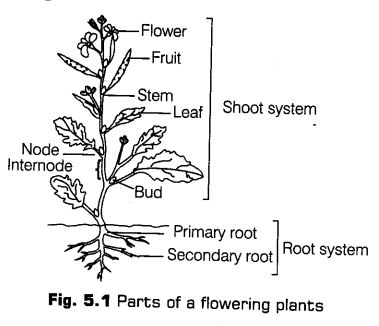
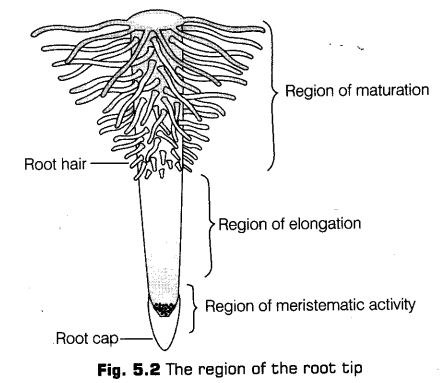
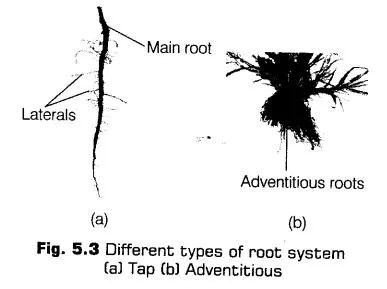
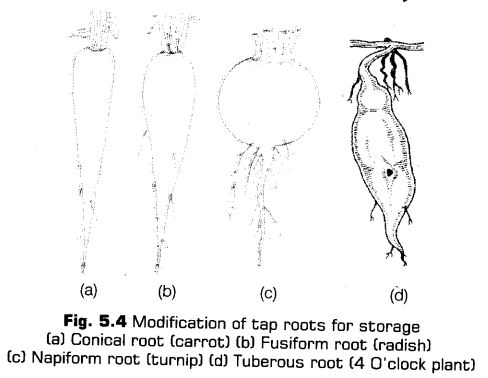
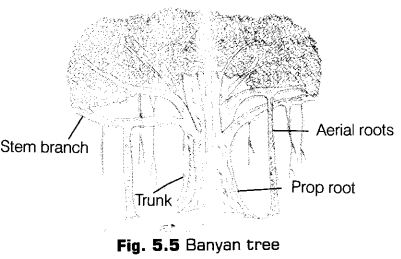
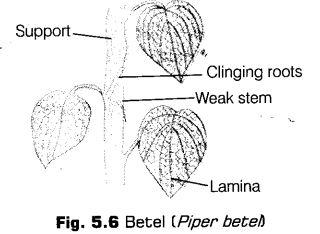
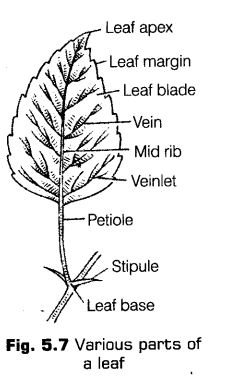
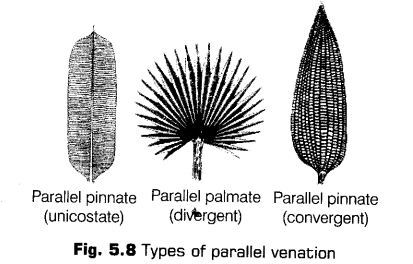
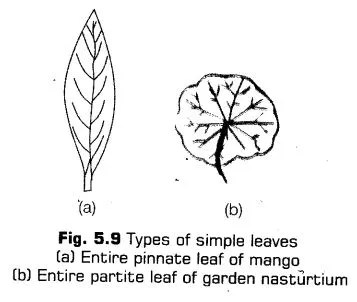
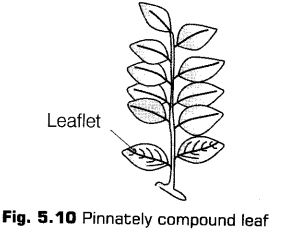
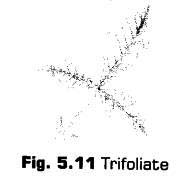
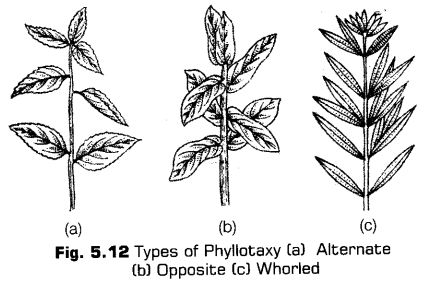
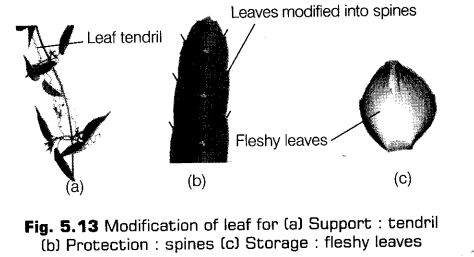
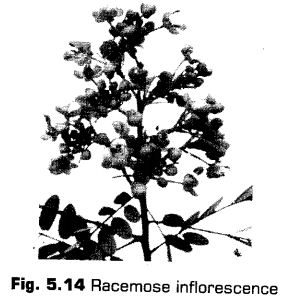
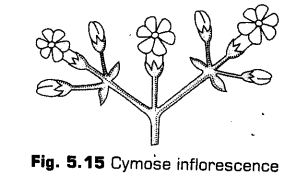
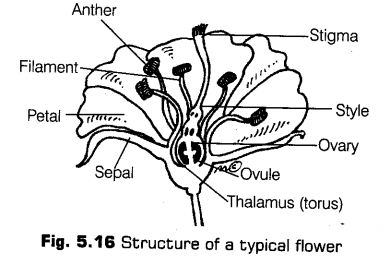
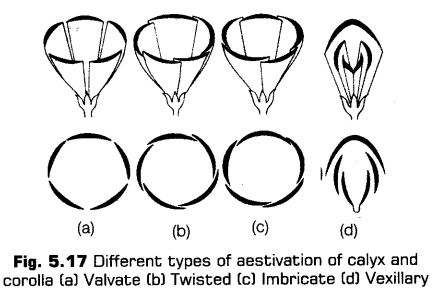
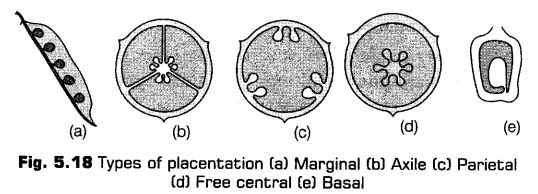
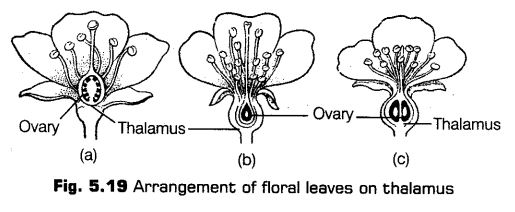
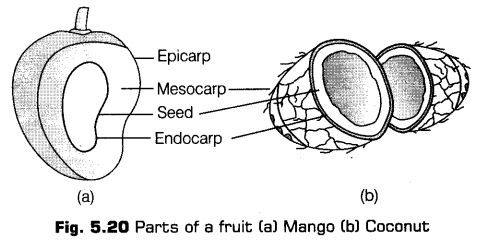
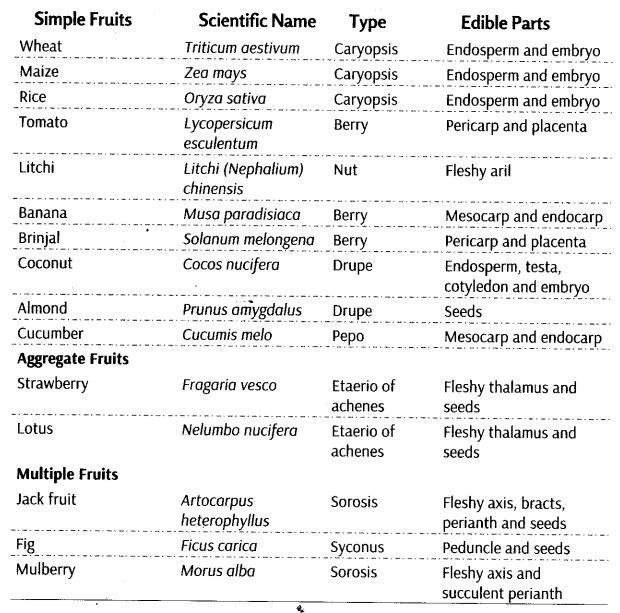
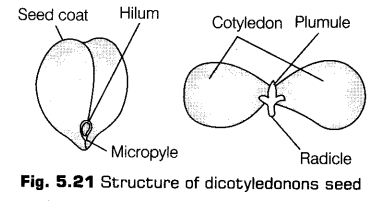
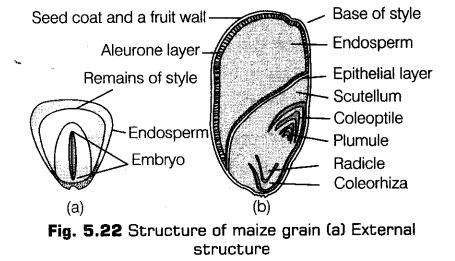
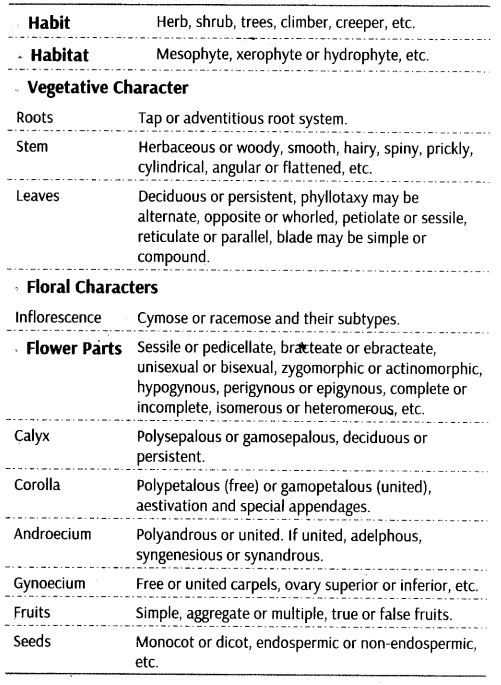
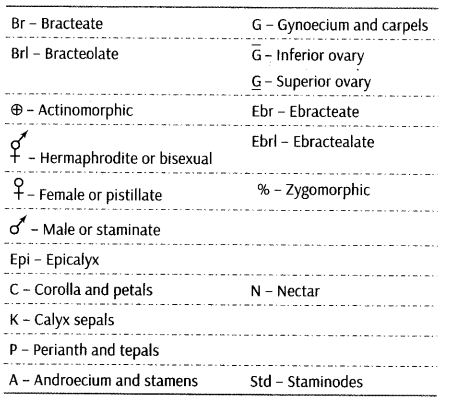
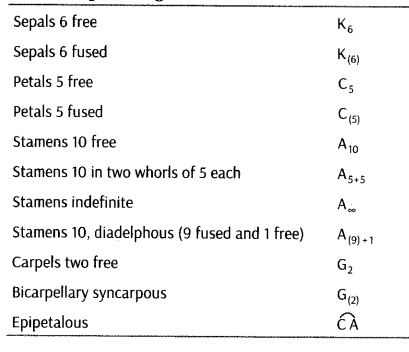
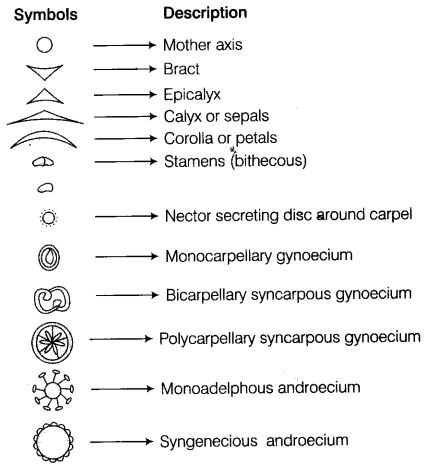
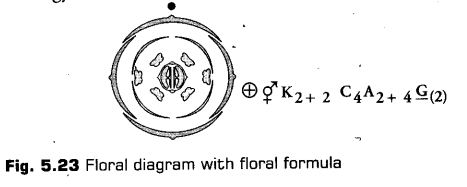
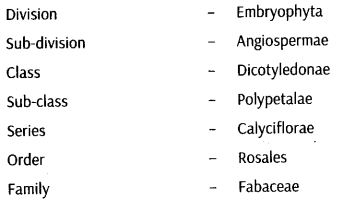
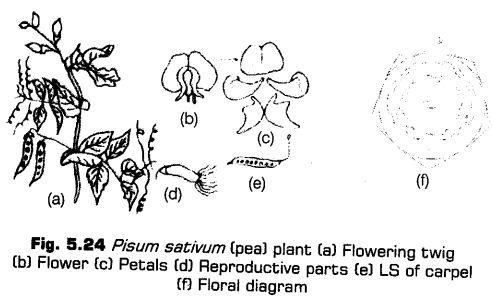
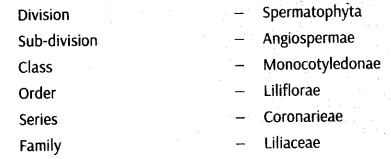
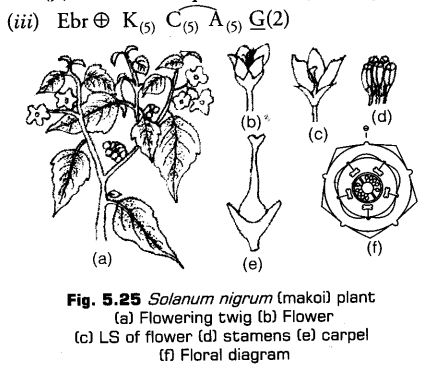
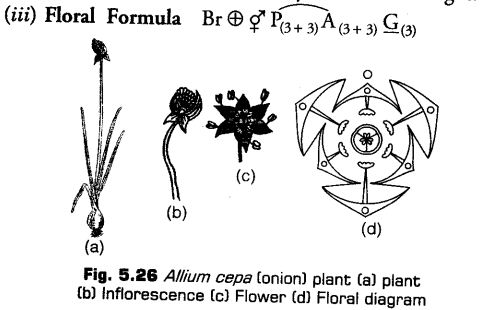
Leave a Reply